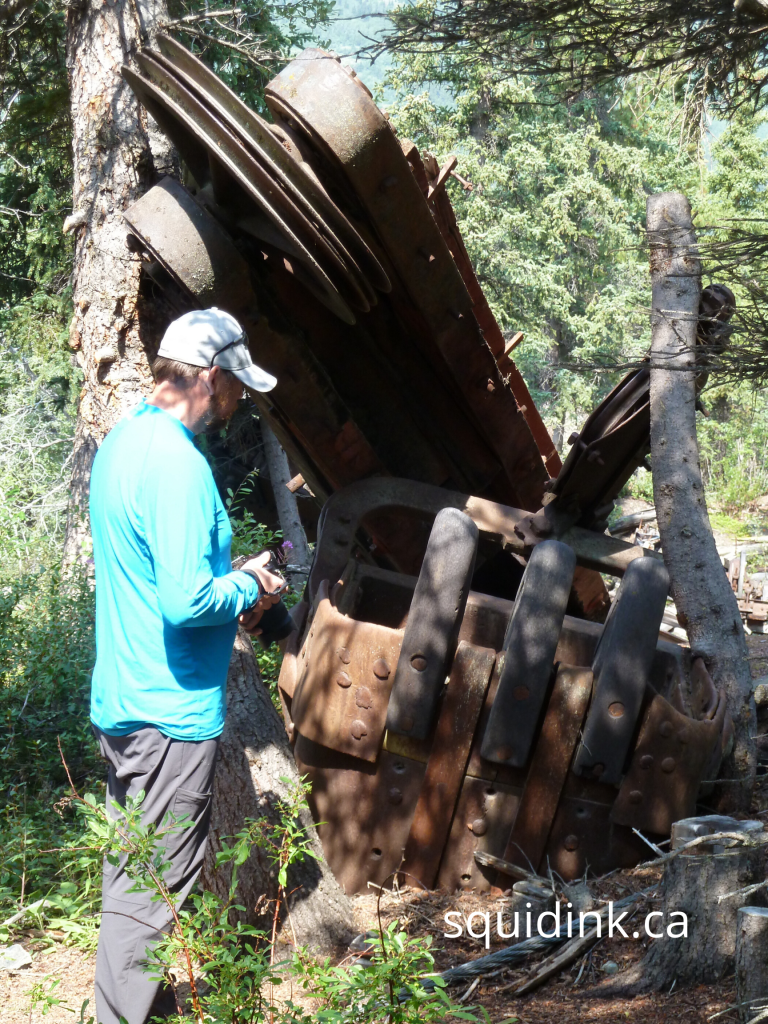The ship that dug it’s own grave on a hilltop in Canada’s north… 460 words … two minute read.
How does a large floating “dipper dredge” made in Marion Ohio in 1904 end up in a landlocked grave on a remote hilltop east of Atlin, British Columbia?

During the Klondike gold rush of 1898, Atlin B.C. was a hotbed of activity due to one of the largest gold strikes in the north, resulting in up to 10,000 people flooding into the area. Although only 109 miles (176 klm) south of Whitehorse (Yukon) by paved road today, during the gold rush, the journey to Atlin took weeks and required packing in on foot as well as lake and river travel. By the mid 1900’s, train travel and large paddle wheeled vessels made the trip considerably easier, but without roads, moving heavy equipment was still a huge challenge.
In the early part of the 1900’s, mining operations became better organized and more efficient. Larger companies like the North Columbia Gold Mining Company had the money to invest in improving the infrastructure to maximize production. Recognizing that the lack of a consistent water supply hampered hydraulic gold mining operations in the Atlin area, a plan was hatched to provide high pressure water for the massive nozzles used in blasting away the overburden to get to the gold.

In 1906, to create a reservoir to provide a source of water, a crib damn was built across the outflow of Surprise Lake. Then in the ensuing two years, a floating dipper dredge, built by the Fairbanks Steam Shovel Company in Marion, Ohio was put into service. With it’s one yard dipper shovel, this steam powered dredge was used to create a 6 foot deep diversion channel, 5 miles long and 26 feet wide. The finished channel provided the huge volume of water needed to flow down through a pressure box to increase the water pressure to supply the hydraulic mining operations on the creek below.

To provide the necessary water drop (head), the channel was completed near the top of the hill above the pressure box structure. Once complete, the dredge was floated into a trench off to the side of the channel terminus …basically digging it’s own grave, and was left to rot. Considering the cost and difficulty getting the dredge to the remote area in Northern British Columbia in the first place, it is remarkable that no attempt was made to recover the dredge.

Now a derelict, this large floating dredge, sitting high and dry on a hilltop in the wilds of northern BC is a remarkable testament to the ingenuity and fortitude of the men and woman who created this history.

